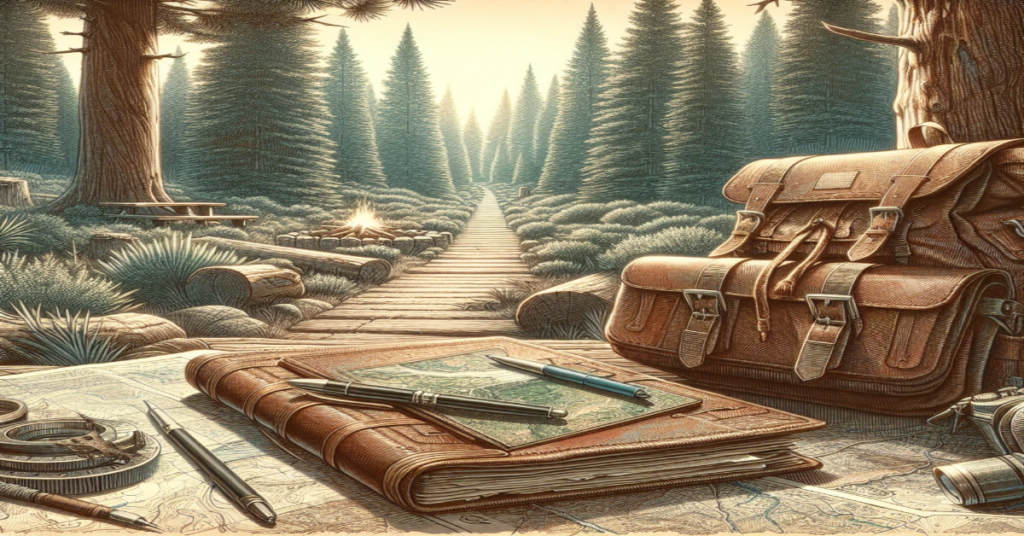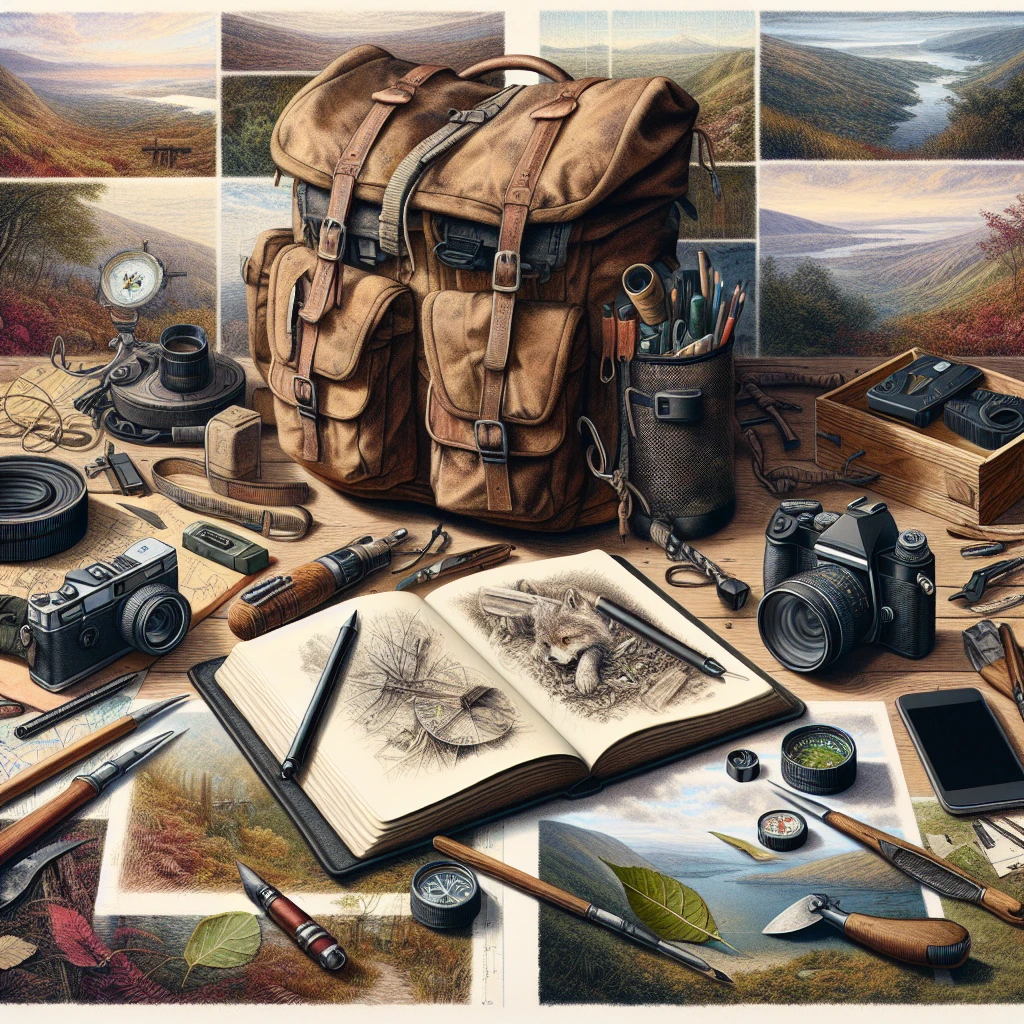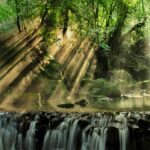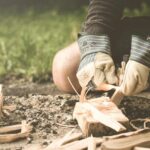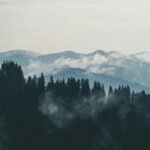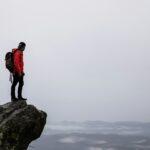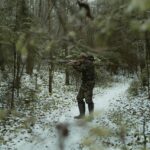

Documenting Your Bushcraft Journey is essential for tracking your progress, learning from your experiences, and sharing your knowledge with others. By keeping a record of your adventures, skills, and techniques, you can reflect on your growth as a bushcrafter and continually improve your abilities.
Keeping a detailed documentation of your bushcraft journey allows you to remember important lessons learned, celebrate your achievements, and avoid making the same mistakes in the future. Whether it’s through written journals, photo albums, or video logs, documenting your experiences can also inspire and educate fellow bushcraft enthusiasts, as well as contribute to the overall community of outdoor enthusiasts.
The Benefits of Documenting Your Bushcraft Journey
Documenting your bushcraft journey can be immensely beneficial in honing your skills, deepening your knowledge of nature, and enhancing your overall experience of applying your newfound expertise in practical scenarios. Through detailed documentation of your experiences, you can track your progress, identify areas for improvement, and share your insights with fellow enthusiasts, creating a virtuous cycle of learning and growth.
Improving Your Skills Through Documentation
By meticulously documenting your bushcraft journey, you not only create a valuable record of your experiences but also gain the opportunity to reflect on your achievements and setbacks. This reflection enables you to identify trends, patterns, and specific techniques that have been particularly effective or require further refinement. For example, you may capture your process of building a shelter using natural materials and note down the challenges faced and innovative solutions devised, creating a comprehensive resource for future skill enhancement.
Moreover, documenting your bushcraft journey allows for the creation of detailed tutorials or how-to guides that can serve as educational resources for both yourself and others. As you revisit and refine your documentation, you can articulate the step-by-step processes, essential tips, and potential pitfalls, consolidating your understanding while contributing to the wider bushcraft community.
Additionally, through the documentation of successful and unsuccessful attempts at various bushcraft tasks, you can analyze your decision-making process, allowing for continuous improvement and refinement of your skills. By noting your learning curve and the specific strategies that led to successful outcomes, you cultivate a deeper understanding of bushcraft principles and practical applications, ensuring ongoing skill development.
Increasing Your Knowledge of Nature Through Documentation
Documenting your bushcraft journey serves as an invaluable tool for deepening your understanding of nature. By meticulously recording your interactions with the environment, such as plant identification, wildlife encounters, and weather patterns, you create a comprehensive repository of ecological knowledge. For instance, you may capture your exploration of local flora and fauna and note down the distinct characteristics, uses, and potential hazards associated with each species, fostering a profound connection with nature.
Furthermore, detailed documentation of natural phenomena, such as the changing of seasons, sunrise and sunset times, and weather fluctuations, enables you to develop a nuanced awareness of the environment, enhancing your ability to adapt and thrive in various outdoor settings. Your documentation may also include observational insights into animal behavior and habitat preferences, contributing to a holistic understanding of the intricate ecosystems that constitute the natural world.
Enhancing Your Experience of Application Through Documentation
Maintaining meticulous records of your bushcraft journey empowers you to derive actionable insights from your experiences and apply them effectively in real-world scenarios. By documenting the outcomes of your practical applications, such as fire-starting techniques, navigation strategies, and campsite selection, you create a repository of knowledge that informs your decision-making process in future wilderness excursions.
Moreover, through comprehensive documentation, you gain the ability to analyze the effectiveness of different tools, equipment, and techniques in diverse environmental conditions, allowing you to tailor your approach based on empirical evidence. Your interactive documentation may encompass detailed accounts of your gear selection and its performance, serving as a valuable reference for optimizing your equipment and refining your bushcraft practices.
Documenting your bushcraft journey not only enhances your individual skills and knowledge but also contributes to the collective expertise of the bushcraft community. Through the power of comprehensive documentation, you can continue to evolve as a proficient bushcrafter, preserving invaluable insights that can inspire and benefit enthusiasts worldwide.
| Skill Improvement | Knowledge of Nature | Experience Enhancement |
|---|---|---|
| Reflecting on achievements and setbacks | Recording interactions with the environment | Documenting outcomes of practical applications |
| Creating valuable tutorials and educational resources | Deepening understanding of nature through ecological observations | Analyzing the effectiveness of tools and techniques |
| Identifying trends and refining techniques | Documenting natural phenomena and animal behavior | Optimizing gear selection based on empirical evidence |
Ensuring Safety and Preparedness
In the wild, leaving an emergency plan is crucial for any bushcraft journey. Before embarking on your adventure, ensure you have a clear plan for emergencies. This plan should include details such as the nearest medical facilities, emergency contacts, and a communication plan in case of isolation. Additionally, it’s vital to inform a trusted contact of your itinerary and expected return time for added safety.
Location, Location, Location
When it comes to bushcraft, location is paramount for safety. Choose an area with accessibility to natural resources like water and shelter. Consider the terrain, weather patterns, and proximity to any potential hazards such as wildlife or flooding. Familiarize yourself with the area and have a secondary location in mind should the need to relocate arise.
Test Gear Prior
Ensuring safety also involves prior testing of your gear. Before setting out, thoroughly check your equipment to ensure it is in optimal condition. This includes inspecting ropes, tents, cooking tools, and any protective gear. Practice using essential tools such as fire starters, first aid kits, and water purification systems to ensure familiarity and functionality.
Remember To Check-In
Lastly, regular check-ins are essential for bushcraft safety. Establish a routine for contacting a friend or family member to update them on your progress. This consistent communication can be a lifeline in the event of unforeseen circumstances. If your journey takes longer than expected, having a check-in system ensures that help can be called if necessary.
| Emergency Plan | Location, Location, Location | Test Gear Prior | Remember To Check-In |
|---|---|---|---|
| Inform a trusted contact | Choose a safe and accessible area | Thorough equipment check | Establish routine check-ins |
| Details of nearby facilities | Consider terrain and hazards | Practice using tools | Consistent communication |
Tools for Documenting Your Bushcraft Journey
Journal and Take Pictures
When embarking on your bushcraft journey, it is essential to journal and take pictures to document your experiences and learnings. Keeping a journal allows you to preserve valuable details about your adventures, including the natural surroundings, your mental state, and the challenges you overcome. Additionally, taking pictures enables you to capture precious moments and the stunning beauty of the wilderness. These visual records serve as a great source of motivation and inspiration for your future endeavors.
High Reach Extended Arm Tip Toe Knot Tying Tip – Crossbar to barked Tree
In the wilderness, the ability to tie effective knots using the high reach extended arm tip toe knot tying tip is crucial for various purposes such as setting up shelters, securing equipment, and creating improvised tools. When employing this technique, remember to use the natural features of the environment, like a crossbar to a barked tree, to ensure stability and durability. Mastering knot tying enhances your adaptability and resourcefulness in challenging situations, a fundamental aspect of bushcraft.
Building an Organizer Campsite Tree Shelf System (Water Container Shelf/Cabinet) Primitive Skills & Modern Technology
Crafting an organizer campsite tree shelf system utilizing a combination of primitive skills and modern technology is an ingenious way to optimize your campsite for functionality and convenience. This system not only provides ample storage for your essentials but also integrates natural materials with modern tools, showcasing the fusion of traditional bushcraft techniques with contemporary innovation. It exemplifies the harmonious coexistence between nature and technology in the wilderness.
Building an Organizer Shelf System around a Tree (bottom shelf) Primitive Technology Skills
Utilizing primitive technology skills to construct an organizer shelf system around a tree demonstrates your ability to adapt to the environment and efficiently utilize natural resources for practical purposes. Building a bottom shelf around a tree not only keeps your supplies organized and easily accessible but also showcases resourcefulness and creativity. This integration of traditional techniques with modern needs amplifies the efficiency and sustainability of your campsite setup.
Making good use of that sewing awl that’s included on your multi-tool
The sewing awl, a versatile tool often included in multi-tools, serves as a valuable asset in bushcraft activities. Its ability to efficiently stitch and repair outdoor gear makes it indispensable for preserving equipment durability while in the wilderness. Whether mending torn fabric, repairing hiking gear, or crafting improvised items, the sewing awl amplifies your self-sufficiency and adaptability, preserving the functionality of your gear and ensuring safety during your bushcraft journey.
General Purpose Cutting Tools
Possessing general purpose cutting tools is essential for various tasks such as crafting tools, processing wood, and preparing food in the bush. Versatile cutting tools like knives, axes, and saws are indispensable for ensuring self-sufficiency and success in the wilderness. Moreover, being proficient in the usage and maintenance of these tools is paramount for maximizing their utility and enhancing your overall survival skills.
When You Pick Up A Knife Also Grab These Two Things
When acquiring a knife for your bushcraft endeavors, it is imperative to complement it with two essential items. Firstly, a fire starter is crucial for igniting fires in outdoor environments, providing warmth, protection, and a means for cooking. Secondly, a compact, high-quality flashlight is indispensable for navigating in low-light conditions, ensuring safety, and signaling for help if needed. These additional tools augment the utility of your knife and contribute to your overall preparedness in the wilderness.
Pocket Sharpening Stone
Carrying a pocket sharpening stone is vital for maintaining the sharpness and functionality of your cutting tools in the bush. Regular sharpening ensures that your knives, axes, and other cutting implements retain their edge, thereby maximizing their performance and longevity. Additionally, it provides the capability to address any dullness or damage that may occur during fieldwork, enabling you to sustain your tools’ effectiveness throughout your bushcraft journey.
Recommended Amazon Products for Documenting Your Bushcraft Journey
Here’s a curated list of products that can help you document your bushcraft journey with ease. These recommendations are based on functionality, quality, and price.
Field Notebook


A field notebook is a crucial tool for documenting your bushcraft journey. It’s durable, compact, and easy to carry around during your outdoor adventures.
Its waterproof pages and sturdy cover make it perfect for recording your experiences in nature.
Professional Camera


Investing in a professional camera can greatly enhance your documentation process. With high-resolution images and video capabilities, you can capture the beauty of nature, wildlife, and your camping experiences.
Look for a camera with weather-sealing features to withstand outdoor conditions.
Multi-tool with Camera Attachment


A multi-tool with a camera attachment is a versatile option for documenting your bushcraft journey. It provides the functionality of various tools along with a built-in camera for capturing moments on the go.
Look for one that offers durability, portability, and high-resolution image capture.
Portable Photo Printer


A portable photo printer allows you to quickly print and preserve your favorite moments from your bushcraft journey. Look for a compact and high-quality printer that is compatible with your camera or smartphone.
The ability to print waterproof and tear-resistant photos is a bonus for outdoor adventures.
Smartphone with Rugged Case


A smartphone with a rugged case can serve as an all-in-one tool for documenting your bushcraft journey. It provides the functionality of a camera, notebook, and internet access in one device.
Look for a durable, waterproof case that can withstand the rigors of outdoor exploration.
Top Recommended Product for Documenting Your Bushcraft Journey
If you’re looking for the best solution for documenting your bushcraft journey, we highly recommend the Professional Camera. Here’s why:
| Pros | Cons |
|---|---|
| High-quality image capture | Higher initial investment |
| Versatile functionality | Additional accessories may be needed |
| Durable design | Requires some technical expertise |
Ready to improve your documentation process? Check out the Professional Camera today for the best results!


Frequently Asked Questions
What does bushcraft involve?
What do you need for bushcraft?
What is the difference between wilderness survival and bushcraft?
What are the objectives of bushcraft?
What does bushcraft include?
Reference Links
- https://www.apa.org/monitor/2020/04/nurtured-nature
- https://www.canadiancounty.org/1195/Emergency-Preparedness-Tips
- https://www.health.state.mn.us/facilities/regulation/engineering/docs/lscgensets.pdf
- https://www.faa.gov/sites/faa.gov/files/pilots/training/airman_education/CAMISurvivalManual.pdf
- https://woodlandclassroom.com/my-bushcraft-journal-part-1-building-better-shelters/

